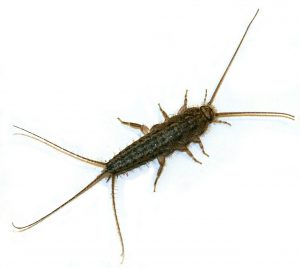Silverfish control

The silverfish (also known by its scientific name Lepisma saccharina) is a small, wingless insect that usually grows to about 30 millimetres in length. Their body-covering scales are silvery blue, hence their common English name: silverfish.
In addition to their distinctive colour, beavers can also be identified by their long, curved antennae and the three ridges at the rear end.
Silverfish have recently become a problem, especially in new houses, which may be related to the materials used for floor insulation (insulation board), as the silverfish eats polysaccharides. sh. cellulose. The silverfish tends to congregate in damp areas, but also in places where their favourite food is plentiful.
Chances are you will only discover the silverfish when they are already in your home en masse. They are nocturnal and move around very quickly. If you’ve seen one silverfish in your home then it’s almost guaranteed that you actually have more.
Silverfish are usually very long-lived.
In general, the beetle is not harmful to humans. Rather, they can damage your property. If you notice damage to books, papers, boxes or other paper or clothing in your home, it’s possible that the culprit is a silverfish, not a moth for example.
Silverfish are attracted to wet areas. such as a cellar, bathroom or storage space under stairs, take measures to remove moisture.
Start by installing a dehumidifier to help keep these areas dry. A good recommendation is to seal any cracks that let water in. Make sure your house is clean and tidy too.
